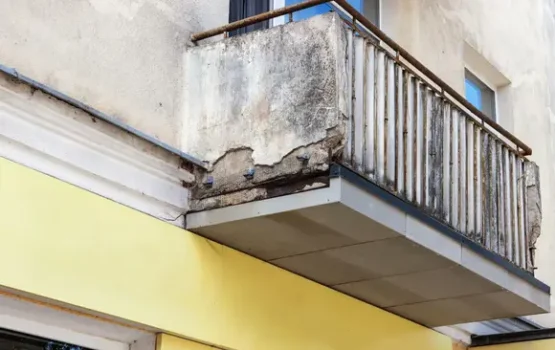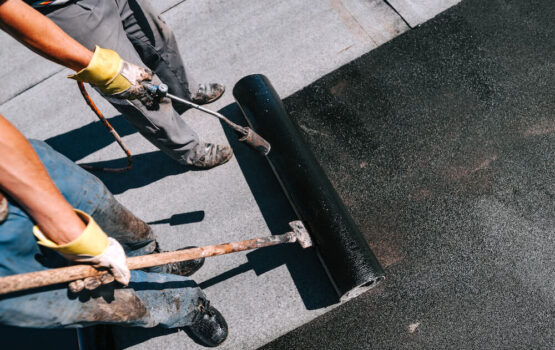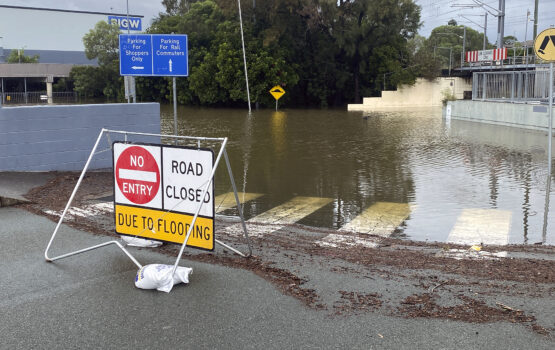Waterproofing is crucial in preserving the integrity and value of homes and businesses. Poor waterproofing can lead to leaks, mould, and harmful growths in the concrete.
These issues could risk safety, decrease property value, and render the property unfit if neglected. Spotting and addressing waterproofing issues early can ensure your property remains in excellent condition.
While the cost of waterproofing may constitute only 2% to 5% of a building’s total expense, it’s noteworthy that flawed waterproofing can account for nearly 80% of all construction-related problems. The consequences of a failed waterproofing system are severe and cause the following:
- Compromised security and safety: Severe structural damage may cause a structure unsafe to occupy. For landlords, this could cause problems with liability and insurance.
- Uninhabitable space: Waterproofing failures can ruin a building to the point where it’s unsafe to live or work, resulting in significant income loss and expensive repairs.
- Leaks: Water seepage causes structural damage to buildings and can also ruin carpets, rugs, and other belongings.
- Concrete cancer: Corrosion of the steel used to strengthen concrete in structures, known as “concrete cancer,” is a common problem in urban areas. When the steel expands, it causes spalling or cracks in the concrete. With the steel more exposed, the rate of corrosion rises rapidly. Cancerous concrete is a typical result of inadequate waterproofing.
Causes of waterproofing failures
Waterproofing failure is more likely to occur on upper levels of multistory buildings. This is because of puddles accumulating on the roof. Flat roofs are particularly vulnerable to water accumulation, leakage and structural damage from rain.
Let’s take a closer look at other causes of waterproofing failure:
-
Inadequate waterproofing
Waterproofing failure occurs primarily due to sloppy construction practices, such as using the wrong product or installation method. Another common waterproofing mistake is rushing to get the job done. You see, these systems require precision and attention to detail during installation.
Rushing through the process or cutting corners — such as skipping essential steps, using fewer materials than required or not allowing proper membrane curing time — can significantly increase the risk of failure.
When contractors try to save time or reduce costs by taking shortcuts, they compromise the integrity of the waterproofing system. For instance, not applying the membrane evenly or failing to overlap seams properly can lead to gaps where water enters.
-
Improper surface preparation
Dirt, dust or uneven areas can create weak points in the waterproofing system. If the surface isn’t properly cleaned or smoothed before applying a waterproofing membrane, the membrane may not adhere correctly. This poor adhesion allows water to seep into the structure.
-
Negligent maintenance
Regular waterproofing failure investigations help spot and preempt more significant problems like concrete cancer. Water damage can rapidly spread, so you must address even minor leaks and cracks immediately. Seals on your windows, doors and walls should also be adequately maintained.
Inspecting balconies, roofs, windows, cracks and leaks as soon as you notice them can reduce the chance of minor issues escalating into severe problems.
-
Wrong choice of waterproofing membrane
Choosing the wrong waterproofing membrane can lead to significant issues down the line. It’s crucial to pick a membrane suitable for your specific needs.
Failure often arises when people opt for low-quality materials or those not designed for their intended use. Such errors can compromise the effectiveness of the waterproofing, resulting in potential damage and costly repairs.
-
Inadequate drainage
While not technically a waterproofing mistake, a lack of a proper drainage system is a foundational error that can lead to water damage. When water has no clear path to escape, it pools and increases pressure on the waterproofing membrane. Over time, this prolonged exposure weakens the membrane, leading to water ingress and structural damage.
The most frequent issues with flat roofs
The construction industry frequently grapples with a common waterproofing problem: restoring a flat roof that has previously failed. Identifying a waterproofing solution that accommodates all relevant considerations is far from a straightforward task.
Should the elements of the roof prove faulty, or if the overall construction isn’t up to par, water could find its way into the building. This could cause the insulation to lose its heat-retaining capacity, substantially diminishing the comfort level for those inside the building.
The cost of roofing repairs required to restore the roof’s waterproofing integrity is usually costly. Diagnosis of the issues isn’t always easy, there are many possible causes for water accumulation, including the following:
- Inadequate upturn or detailing around the periphery
- The breakdown of the top weather shield
- Poor and insufficient detailing near penetrations
Determining the need for waterproofing repairs
Roof and plumbing systems and water and weather-exposed surfaces like windows should be part of your regular maintenance inspections for leakage.
The best way to find leaks and cracks early is through a complete building examination. Check key areas such as rooftops, balconies, and living and working spaces, even if they are far from any water.
At least once every six months, strata buildings and commercial premises should conduct a thorough check of their roof, paying particular attention to the flashing, valleys, and other potential entry points for water. In addition to cracks and leaks, check for stains during an inspection.
Quick action and corrective waterproofing can save you money and keep your building from losing value, so don’t ignore the minor leaks.
Waterproofing repairs need a team of experts
Working with professional waterproofing engineers and contractors will increase the likelihood of a successful project. Do not attempt a DIY solution; rather, have a professional waterproofing consultant assess the situation and have them advise on the necessary repairs.
Experts know what to use and how to apply the membrane so that it protects against water seepage and provides ongoing protection.
When waterproofing fails, a building’s safety and worth are compromised. These problems usually stem from shoddy work – using the wrong product or improperly installing the membrane.
When you perform routine inspections and corrective waterproofing, you can prevent minor leaks and concerns from developing into significant catastrophes.
Being in the remedial waterproofing industry for over a decade, MJ Engineering Projects has established itself as Sydney’s go-to for superior waterproofing solutions.
Discover more about our remedial waterproofing services and get in touch with our team today.



